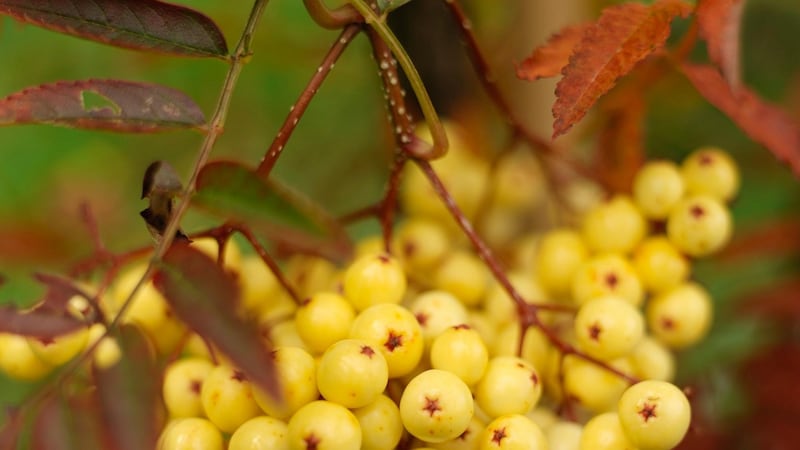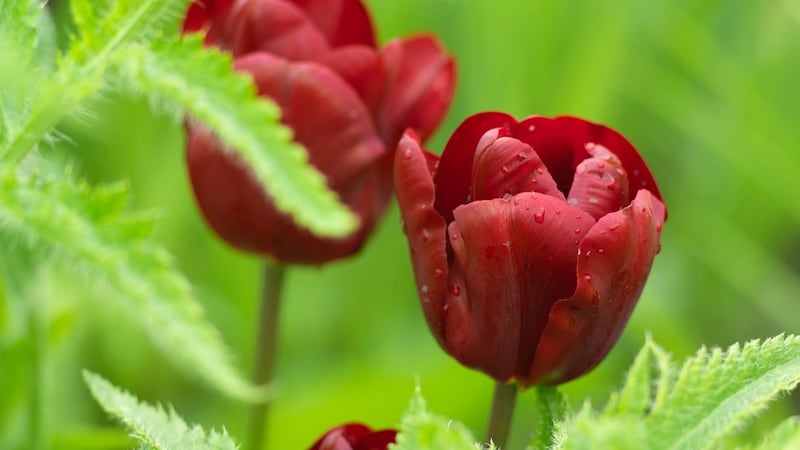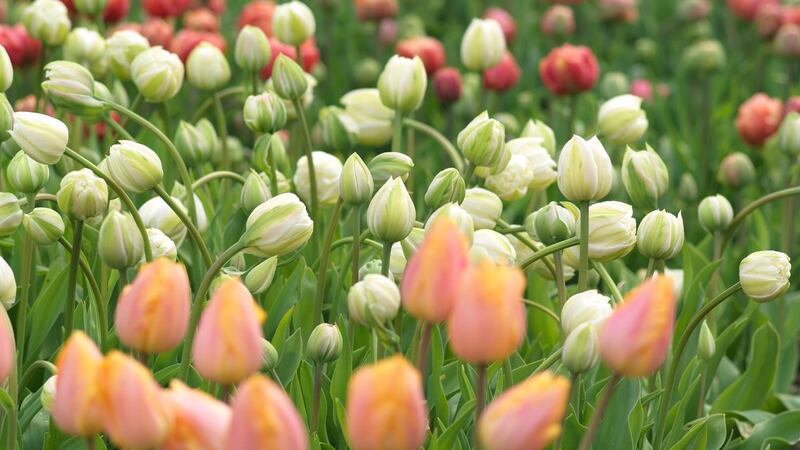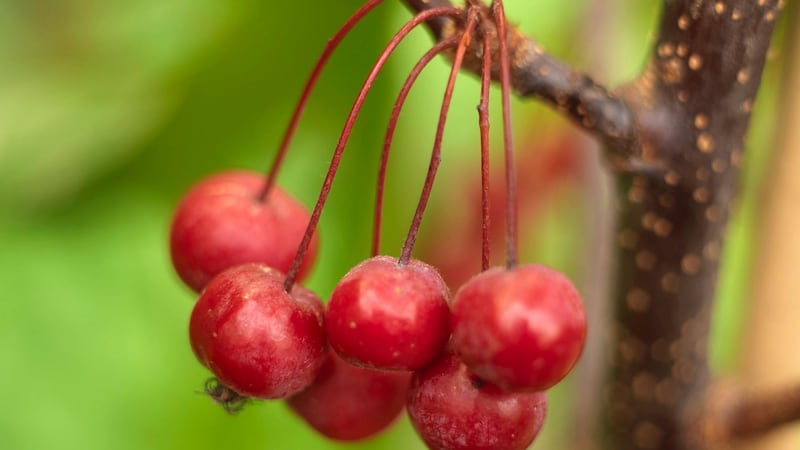Continuing our mini-series where I temporarily don the hat of horticultural agony aunt, this week’s query is from a reader in Dublin.
“Help! While we need to use our small city front garden for off-street parking, we’d love to ‘green it up’ as much as possible and make it a place that’s friendly to garden wildlife. Any tips?”
With over two million passenger cars licensed for use on Irish roads, the increasing use of urban front gardens for off-street parking is inevitable. But there’s no denying that it comes at a cost to the environment and the general ambience of our towns and cities as well as to the well-being of those who live and work in them. The sad fact is that the loss/degradation of these small, leafy spaces has resulted in increased air and soil pollution, heightened the risk and severity of urban flooding and diminished urban biodiversity as a result of habitat loss/fragmentation.
Even something as seemingly simple as the removal of an established garden hedge has untold consequences for the birds, mammals and insects that depend upon it for shelter and for food. Take into consideration that same hedge’s ability to filter traffic noise and air/soil pollution as well as to help alleviate urban flooding through its root systems, and the complex role that even the smallest urban garden can play in supporting a healthy and resilient urban environment becomes starkly obvious.
Which is to say nothing of the important aesthetic role that these very visible gardens also play within our cities’ streetscapes as lovely, leafy counterbalances to the built environment. Historic properties have particularly suffered in this regard through the inappropriate use of modern building materials and the destruction/removal of cast-iron railings and gates or old walls.
For the sake of other readers who may be contemplating creating off-street parking, it’s worth adding that local authorities are taking a much stricter line in recent years with regards to the alteration of urban front gardens to provide parking for residents. Planning permission is typically required and not necessarily granted, especially in those cases where it’s deemed that it would have a negative impact on the character of the building as well as the existing streetscape.

But for owners of front gardens where planning permission for parking has already been given, the good news is that there's plenty you can do to make it a nature-friendly one. Let's start with the hard surfacing, which ideally should be kept to a minimum using a permeable material that allows for the quick dispersal of surface rainwater. So avoid the use of tarmac, conventional concrete and other traditional non-permeable paving materials in favour of ornamental pebble/gravel or modern, permeable paving options (for example, Kilsaran's 'Clima-Pave' range, see kilsaran.ie). When it comes to calculating the minimum area required for hard surfacing, bear in mind that the average car requires a parking space of 3 metres x 5 metres plus enough space to safely manoeuvre it in and out of the garden.

Planting
Now let’s talk about the planting. Unless it’s really tiny, make room for a compact variety of ornamental tree, which will provide food and shelter for a variety of garden wildlife as well as helping to filter air pollution and suck up excess surface water. Suitable candidates include Amelanchier arborea (especially the compact variety ‘Robin Hill’), any of the many varieties of mountain ash (Sorbus) or the ornamental crab (Malus), cultivated forms of hawthorn (Crataegus), the evergreen strawberry tree (Arbutus unedo), and the Chinese dogwood (Cornus kousa var. chinensis).

Next, look at the boundaries between your garden and those of your neighbours. If these are ugly walls or short-lived wooden fences rather than hedges, then consider planting a hedge alongside them if space permits. The most wildlife-friendly choice is to use an informal mix of native species such as hawthorn, holly, hazel and blackthorn. Now is a great time to plant these as bare-root specimens, which will help to keep costs down. But if you’d prefer an evergreen hedge using just one species, then suitable candidates include Portuguese laurel (Prunus lusitanica), yew (Taxus), Lonicera nitida, Osmanthus burkwoodii and privet (Ligustrum).

Climbers and shrubs
Alternatively, you could cloak your front garden fences/walls in climbers and shrubs. In this case, the humble ivy is a wonderful wildlife-friendly, shade-tolerant choice, providing food and cover for birds and insects. Other suitable candidates include some of the many varieties of clematis, climbing roses, and shrubs suitable for training vertically such as Hydrangea petiolaris, Itea ilicifolia, Azara microphylla and Garrya elliptica. These climbers and trained shrubs are also a great nature-friendly choice for your house walls. Just make sure to choose plants that are suitable for the particular growing conditions your garden offers (so consider aspect, soil type, garden microclimate).

Underplant these larger specimens with generous drifts of spring-flowering bulbs and low-maintenance, shade-tolerant, tough ground-cover plants such as epimediums, vinca, ajuga, and evergreen ferns to provide foliage and floral interest throughout the year.
It goes without saying that avoiding the use of environmentally harmful garden chemicals–pesticides, fungicides, herbicides, synthetic fertilisers–will also do a huge amount to green up your little front garden. So will simple things like installing a handful of regularly filled bird-feeders and adding occasional generous sprinkles of homemade garden compost to keep the soil- and thus the plants– in good heart. Follow these tips and you’ll be amazed by how quickly this tiny urban space will come vividly to life.

This Week in the Garden
As long as soil conditions aren't too wet underfoot, November is the perfect time to plant tulip bulbs as the cooler soil temperatures helps protect the bulbs from damaging diseases such as tulip fire (Botrytis tulipae), a nasty fungal disease that affects all parts of the plant. Make sure to choose large, plump, blemish-free bulbs and discard any that show obvious signs of disease or blemishes (mould, dark spots or bruises) before planting them deeply into fertile, free draining soil. Recommended suppliers include Beechill Bulbs (bulbs.ie), Mr Middleton (mrmiddleton.com) and for certified-organic bulbs, Fruithill Farm (fruithillfarm.com).
There's still just about enough time (but hurry) to plant peonies–one of the most beautiful of all flowering plants–as young, bare-root specimens. Both the traditional herbaceous kinds and what's known as the Itoh intersectional hybrids (a cross between a shrubby tree peony and a herbaceous peony) are available to order from Wicklow-based peony specialists Leamore Nursery (leamorenursery.com).

These exceptionally long-lived plants love a rich, slightly alkaline, free-draining soil enhanced with manure along with a sprinkle of dried seaweed and organic granular fertiliser and a position in either full sun or light shade.
It may feel like that time of year when the garden goes to sleep, but in fact November is a great month to take root cuttings of a range of different perennials and shrubs, giving you lots of plants to populate your garden for little more than the price of a few bags of compost. Suitable species include Acanthus, Aralia, Japanese anemones, Chaenomeles, Eupatorium, Echinops, Hydrangea, Phlox, Papaver orientale, Philadelphus, Robinia Sophora, Syringa and Verbascum. For detailed instructions, see rhs.org.uk.
Dates For Your Diary
Thursday, November 16th, National Botanic Gardens, Glasnevin, Dublin 9 (8pm-9.30pm,) 'The Plant Collections at RHS Garden Hyde Hall', Essex, UK, with garden curator Rob Brett on behalf of the Irish Garden Plant Society (IGPS), see irishgardenplantsociety.com.
Thursday, November 16th (8pm), Artane Beaumont Recreation Centre, Kilmore Road, Artane, a talk on roses by rose breeder David Kenny on behalf of Dublin 5 Horticultural Society, admission €5.












